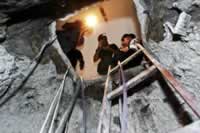| 2Spare.com - Endless entertainment to spare. |
|

 Weird News
Weird News Funny Pictures
Funny Pictures Games
Games Illusions
Illusions Magic
Magic Jokes
Jokes Funny Articles
Funny Articles Bizarre Auctions
Bizarre Auctions Secrets SecretsCommunity: Users: Ads: Instantly Fill your Website with Targeted Content Keyword-rich articles that will bring targeted traffic to your site! How to make $11,000 per month On eBay Make thousends on Ebay by following these easy steps Kick butt: Learn to Defend Yourself The Ultimate Self-defense Guide, Man Will Fear You. Stop Snoring Using Easy Exercises Simple, step-by step 3 minute exercises to cure snoring |
|
||||||||||||||||||||||||||||||||||||||||||||||||||||||||||||||||||||||||||||||||||||||||||||||||||||||||||||||||||||||||||||||||||||||||||||||||||||||||||||||||||||||||||||||||||||||||||||||||||||||||||||||||||||||||||||||||||||||||||||||||||||||||||||||||
We are proudly hosted at Crystaltech (these guys rock)









